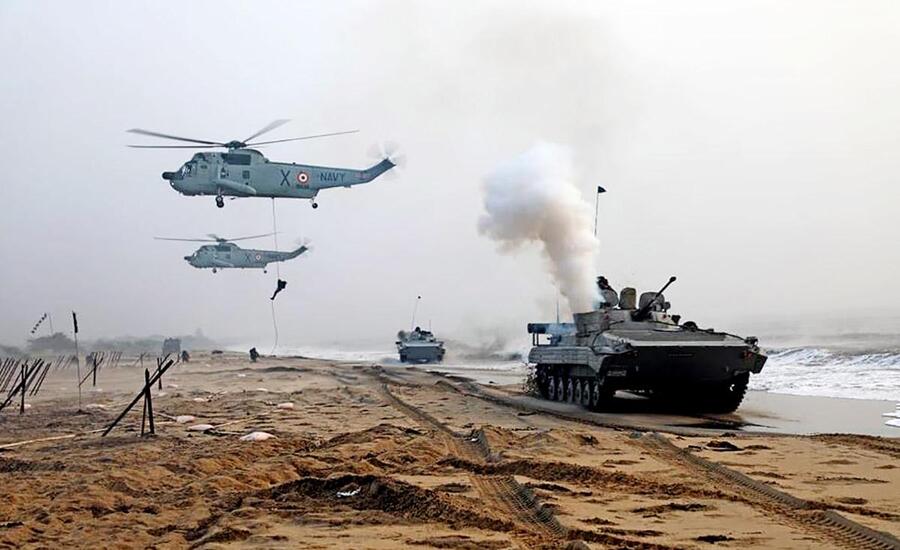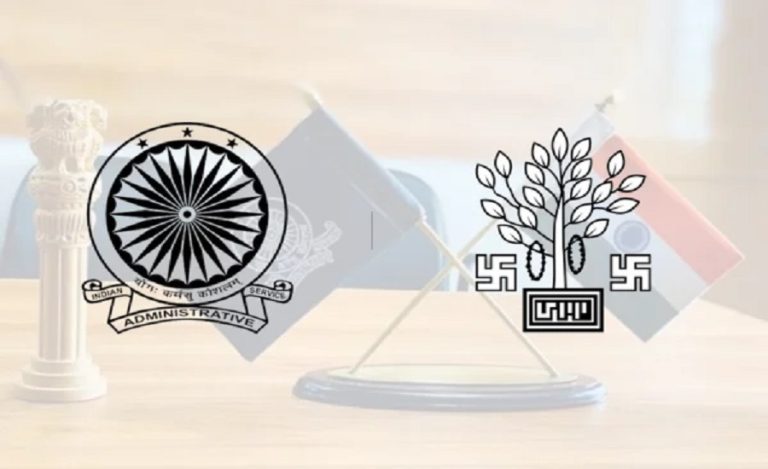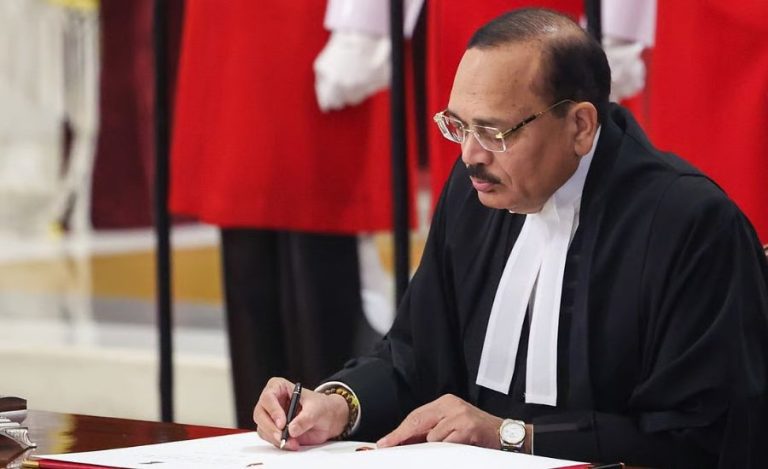New Delhi: India is facing evolving security challenges along its frontiers and it has increasingly emphasised tri-service integration—where the Indian Army, Indian Navy and Indian Air Force operate seamlessly together. With terrain-specific threats, especially in mountainous and maritime zones, the need to validate joint operational frameworks, real-time intelligence sharing, unmanned platforms, electronic warfare and cyber capabilities has become strategic. The new defence exercise builds on past drills such as “Bhala Prahar” (2023) and “Poorvi Prahar” (2024) to push readiness further.
Key Details of the Poorvi Prachand Prahar Exercise
The exercise is named Poorvi Prachand Prahar. The details of this exercise are as follows;
Location: The rugged high-altitude zone of Mechukha in Shi-Yomi district, Arunachal Pradesh.
Terrain & Scope: The terrain combines high mountains, valleys and forward areas—creating a realistic high-altitude war-fighting environment for land, air and maritime operations.
Duration & Focus: Taking place this month (November 2025), the aim is to validate multi-domain integration—land, air and maritime fronts—with special emphasis on interoperability, situational awareness, networked command and control, and mission simulations.
Importance of Poorvi Prachand Prahar Exercise
This exercise marks a significant step in India’s defence posture for several reasons:
Frontier Readiness: Arunachal Pradesh shares sensitive borders and challenging terrain; conducting a tri-service exercise here sends a clear message of preparedness.
Multi-Domain Ops: The integration of unmanned aerial/ground platforms, precision weapon systems, network-centric operations centres, along with land-air-sea coordination, reflects the shift towards future warfare doctrines.
Read Also: India’s Shield in the Sky — DRDO SRK EW Suite Brings Unmatched Protection for Tejas Mk1A
Indigenous Focus: The armed forces are leveraging home-grown platforms and revised tactics, techniques and procedures (TTPs) tailored for high-altitude, multi-domain operations—underscoring the drive for “Aatmanirbhar Bharat” in defence.
Joint Force Synergy: By linking the Army, Navy and Air Force in a single exercise, India strengthens command-and-control, logistics coordination and unified mission execution—crucial in complex settings.
Who’s Driving the Poorvi Prachand Prahar Exercise
The role of public relations and official communication is handled by Lt Col Mahendra Rawat—Defence PRO—who has briefed media and issued statements on behalf of the participating services. He outlined the exercise’s objectives, terrain specifics and operational highlights.
What’s Being Tested & Validated
Interoperability of Platforms & Services: The exercise seeks to synchronise operational procedures across the three services, enhancing joint effect-based operations in multi-domain environments.
Networked Command & Control: With networked operations centres, unmanned platforms and precision systems, the drills test real-time decision making, situational awareness, and integrated control under high-altitude constraints.
High-Altitude & Maritime Zones: Apart from mountain terrain in Arunachal, previous drills such as Trishul in western and maritime zones serve as context for India’s comprehensive readiness across different geographies.
Cyber-Warfare & Electronic Warfare (EW): The exercise encompasses ISR (Intelligence, Surveillance & Reconnaissance), EW and cyber operations—ensuring preparedness for non-kinetic and hybrid threats.
Strategic Messaging & Implications
Signal of Defence Posture: Holding the exercise in Arunachal sends a firm signal to adversaries about India’s operational readiness along its northern and eastern frontiers.
Boost to Indigenous Defence Ecosystem: Showcasing the employment of Indian-developed systems aligns with India’s ambition to reduce dependence on foreign equipment.
Enhancing Joint Force Capability: The move towards fully integrated tri-service operations means quicker, cohesive responses in emerging conflict scenarios—whether high-altitude, maritime or cyber.
Operational Flexibility: Realistic training in diverse terrains (mountains, coast, desert) ensures forces are more agile, adaptive and ready for multiple threat vectors.
What to Watch For
Duration & Scale: While the current exercise timeline is within November, observing how long and extensive the involvement of various formations is will indicate India’s level of commitment.
Technological Integration: How extensively unmanned platforms, cyber-weapons and precision systems are used will reflect the future warfare orientation.
Post-Exercise Reports & Read-outs: Statements by senior leadership, media briefings and official releases will shed light on lessons learnt and operational advances.
Regional Reaction: Monitoring response from neighbouring countries and geopolitical actors will show how India’s defence posture is viewed externally.




























